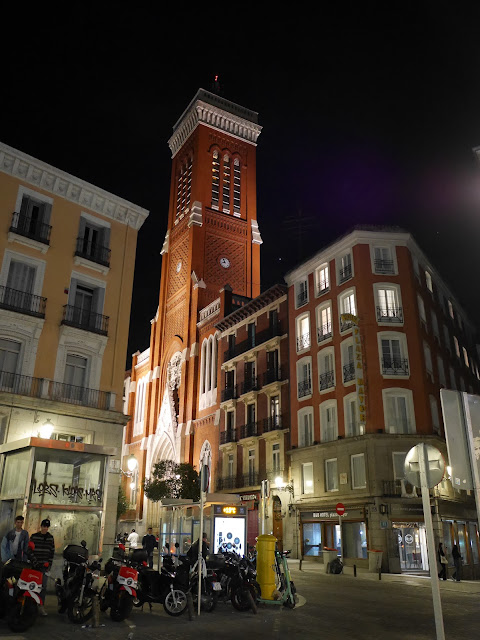First thing you should do
Visiting Madrid for the first time? Felicidades! Time will fly.
Here's my suggestion: As soon as you drop off your bags at the hotel or Airbnb, hop on the Metro and get off at the Retiro station. Climb the stairs and locate the 18th century Alcala Gate, below.
Once you've done that, start walking west down Calle de Alcala. As you can see from Antonio Joli's painting below, it was already a handsome boulevard in 1750, but this street, more than any other, I think, shows just what a decisive transformation Madrid underwent from the Napoleonic occupation until the Second Republic (1808-1932).
The first thing you'll probably notice is the former main post office on the Plaza de Cibeles, built between 1905 and 1907 and easily the most imposing early 20th century building in the city. Imagine slinging your postal satchel over your shoulder and coming to work here every day. It's now used for official receptions and city council ceremonies.
It was designed by Antonio Palacios Ramilo, the same architect who thought up the Hospital de Maudes (1909-1916), now some kind of administration building. I walked halfway to the airport to get this shot.
But back to the base of Calle de Alcala, where your eye will likely turn next to the Bank of Spain. The street developed into the financial center of Madrid in the 19th century, and many of the big banks still have their headquarters here.
A detail of the building's clock and golden ball.
Continuing east there appears the architecturally confused Edificio Metropolis (1905-1907). The first time I ever saw this building was in an aerial view on an untitled Chromebook screensaver, and I thought "I have to go there." It took me a few weeks to figure out where "there" was.
A bronze Goddess of Victory beats her wings atop the Metropolis' black dome.
The road splits here, with the right fork opening up to the Gran Via, where you can see the Huntress Diana and her scent hounds atop the Hyatt Centric at No. 31.
This is also the way to go to view the already discussed Cine Callao and Edficio Capitol.
The left fork is continuation of the Calle de Alcala, where the Edificio Banesto (1882-1891), now the Four Seasons, rises like a ship's prow.
Elephant motifs on the Banesto.
Across the street (at right) is the Palacio de Fomento (1893-1897), housing the Ministry of Agriculture.
If your heart is nearly jumping out of its cage by now, I envy you, because you're just getting started! I have so much more to share of this spectacular city, but if for some reason you don't hear from me for a while, it is because I have returned to my terrifying job. I hope to travel overseas again in the spring, but so many things remain in flux. [Note to visitors from the future: The world was undergoing a heartbreaking pandemic.] In 2019 I planned to be in Lahore this week, but curveballs are tough to hit. This stroll down Calle de Alcala is enough for now and gives me plenty to ponder. Why is the modern world so ugly? for instance.
















